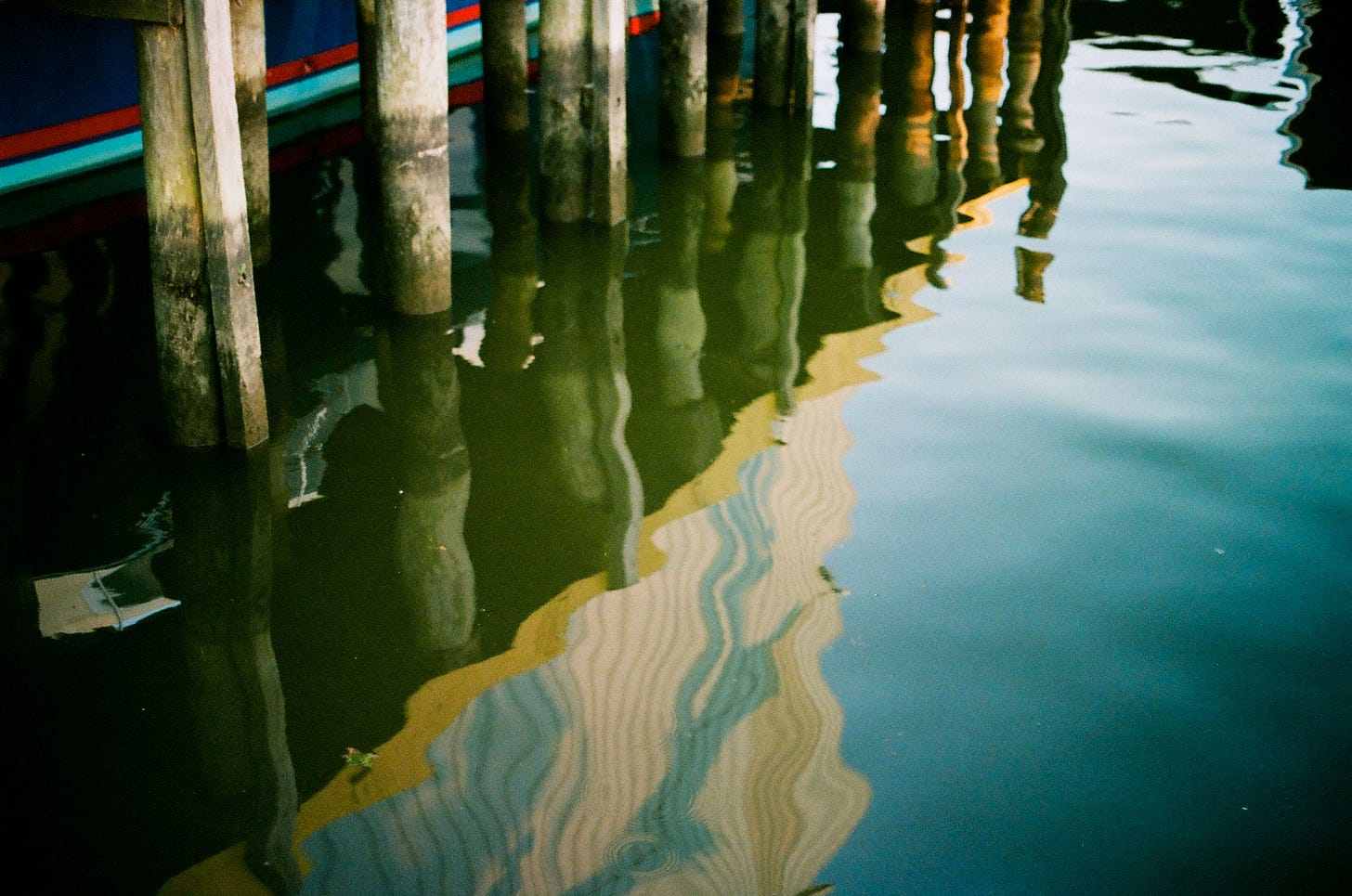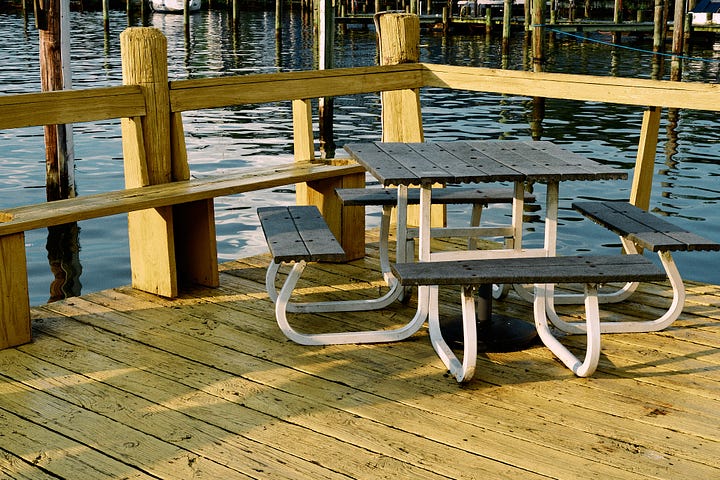
You may remember a series of newsletters I published exploring the landscape of self-publishing for photographers a while ago. Interspersed with various evaluations of print-on-demand services I discussed limitations, editorial decisions, and how valuable projects are for photographers. The final output of that project was an 84-page book/magazine, including the cover that was a documentary exploration of my back yard. Not literally my back yard but within five minutes of where I live. A better description would be my neighborhood.
Somewhere I mentioned how big of a challenge this was for me. I am far more a portrait photographer than I am any sort of landscape or documentary photographer. Especially true if the scenes are devoid of people as the main subject. I tend to look at the scene as context or background rather than a primary subject. The other big challenge I did not mention was that I tend to have a hard psychological divide between commercial work (for other people or to serve some editorial purpose) versus personal work. That hard divide has always manifested itself as color equals commercial, editorial, and illustrative work. Black & white equals personal work. Sure I have made black and white photographs on the rare occasion for non-personal work but that was the rare exception.
From the first attempt at making pictures for this project, I needed to set myself limitations. I took two cameras with me on my first outing. The Fuji X-Pro 3 and an Olympus OM2SP loaded with Kodak Portra 160. Both cameras had 50mm f/1.4 lenses (or the equivalent on the Fuji). I had set the field of view as a limitation, specifically that of a normal lens. I sent the film off to be developed at the cheapest place I could find. While waiting, I ventured out a couple of times shooting with the X-Pro and the Olympus but this time the film was Fuji 400H.
Plain Old Pictures
As soon as I received the Portra 160 results I set the final limitation. I immediately knew the film’s color palette and contrast were perfect for the yet-to-be-finished project. The Portra film was old so I shot it at box speed but pushed the development one stop just in case it lost speed and contrast. The resulting rendition was just what I wanted.
I quickly matched the results of my digital photographs to the pushed film and made myself a preset. I plastered that preset onto every digital frame already made and every frame I made until I was finished. This is one aspect I mean by the phrase ”plain old pictures” I used describing the editorial bent of LFI last week. Setting a limitation on the look, the color palette, the contrast, and other things as if I were shooting it on film. I removed the endless post-processing potentialities of digital at least for evaluating work during the editorial process. The results of that first outing also gave me an approach to a subject not in my wheelhouse. My approach was to make a portrait of the place, a different mindset than pure landscape or pure documentary.
From there forward I did use another roll or two of Portra 160 but also continued to use the Fuji X Pro-3. I never again took both cameras together. It didn’t matter that much, either way, I had a look and visual cohesion. I finished the project in 2021. I am happy with the result. The project title was the last thing I did rather than the first, it ended up “Quiet Places: Volume #1”.
Why Volume #1? First, as a crutch to finishing something while allowing me to say to myself; Maybe I’m not done. The other less cowardly reason is that I do intend on a few more volumes that will explore other Chesapeake neighborhoods. I hope to show their similarities and contrasts. I hope to have time during the rest of this summer and fall to work on those. The towns I have in mind are a short drive but nothing as convenient as “your own backyard”.
The vast majority of the 84 pages of Volume #1 are plain old pictures in another sense. They are a hybrid of documentation that could fall either on the side of environment or landscape depending on the particular photograph or the way one might look at it. There are literally a couple of pictures that venture into the abstract like the picture at the top that set the visual look of the entire project.




New Ideas and Directions

That picture at the top is not included in Quiet Places Volume #1 but a couple similar shots are. I juxtaposed those with more straightforward views of the same scene in the final layouts. Without consciously realizing it I made an almost identical shot two years later. I figured this out yesterday when looking through that original roll of pushed Portra.
Two years ago while making that color documentary project in my own backyard there were a few abstract reflections I shot that transformed into the Watercolors project. Doing small, local projects of any type lead you to new ideas. Of course, I knew that Quiet Places led me to the more abstract renditions of the Chesapeake landscape but until yesterday I had no idea how early that seed started to sprout. Although related, they are very different projects with very different output and voice.
I thought this walk-thru might be interesting to some of you who have been following along for the last couple of years. Semi-contrived projects lead to other ideas, other thoughts, other projects, and places you’d never expect them to. They are idea generators and vision expanders.
Spelling it out: - Contrived color documentary project to evaluate self-publishing providers leads to...
Actual Quiet Places Volume #1 with more to come all being “portraits of the coastal Chesapeake” leads to...
Watercolors abstract fine art print project on ultra-thin Awagami Kozo paper
Leads to... a few more things I’ll discuss another day
As a bonus, these small projects certainly keep those visual muscles exercised, hone editorial sensibilities, and remove the fumbling and bumbling with your camera gear.




Wow. I learn so much reading your Substack. I realize this sounds like a usual lah-de-dah FB (which I don’t use) or Igram (which I do sparingly) like but honestly it’s a great lesson for a photo enthusiast looking for new ways to practice. I have many neighborhood shots from near daily walks with a camera during the COVID shut-in which I’ve always thought of as a “project” but only posted them to give colleagues in China a look at a part of the US they were unlikely to see anywhere else. This post guves me lots of ideas for thinking about what more I could do with them and the zillion photos I’ve taken in my literal backyard for practice. I’m very happy you junp started some wheels turning as I have been feeling a little stale. And as akways I find your photos to be inspiring.
That was a beautiful essay.